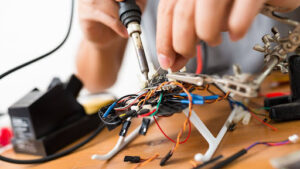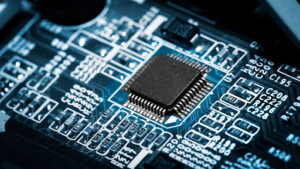In today’s fast-paced world, consumer electronics have become an integral part of our daily lives. They’re everywhere, from the smartphone in your pocket to the smart TV in your living room. But what exactly are consumer electronics?
This term refers to any device containing an electronic circuit board that’s designed for everyday use by individuals. They’re the gadgets and gizmos that keep us connected, entertained, and productive. In the following sections, we’ll delve deeper into the world of consumer electronics, exploring their evolution, significance, and the latest trends shaping this dynamic industry. Stay tuned to learn more about the devices you can’t live without.
What is Consumer Electronics

Consumer electronics permeate nearly every aspect of daily life. These electronics comprise devices such as mobile phones, personal computers, printers, music systems, digital cameras, and televisions. Consumer electronics’ primary intention revolves around communication, entertainment, and productivity enhancement.
Plunging deeper into consumer electronics involves recognizing the essential elements that constitute these everyday devices. Predominantly, any gadget belonging to consumer electronics incorporates an electronic circuit board for its functioning. For instance, smartphones comprise several small ‘chips’ or integrated circuits which are the brain of the phone.
Consumer electronics exhibit a vast array of characteristics. Primarily, they’re intended for everyday use, designed with a focus on user-friendliness. Equipped with intuitive interfaces, they enable users to operate them with relative ease, barring a complex learning curve.
Examining the market of consumer electronics reveals its immense scale. Market reports suggest billions of consumer electronic gadgets have become quintessential to daily life. Taking note of the smartphone category, over 1.5 billion units were sold globally in 2019.
Major Categories of Consumer Electronics
Consumer electronics split into several diverse categories. Each category carries a distinct function, targeted at different user needs.

- Telecommunication Devices: Smartphones and tablets dominate this category. Users find them indispensable for communication and surfing the internet. Connectivity and mobility, mentioned earlier, represent critical features for devices like the 3.8 billion smartphones in use worldwide (Newzoo, 2021).
- Audio and Video (AV) equipment: This category includes televisions, speakers, and headphones. The rise of streaming services like Netflix accounts for the surge in smart TV sales. For instance, Global Smart TV Market Report 2020 estimated global smart TV sales to reach 267 million units in 2020.
- Photography Equipment: The photography equipment division covers digital cameras, camcorders, instant cameras, and related accessories. Technological innovations fuel this sector, with the inclusion of AI-powered features such as automatic scene detection in many digital cameras.
- Personal Computing Devices: This segment includes laptops, desktop computers like Dell Optiplex 7010, and printers. It’s estimated there were 1.36 billion personal computers in active use in 2021 (Statista, 2021), illustrating the considerable market size.
- Gaming Consoles: Gaming consoles, such as PlayStation and Xbox, appeal to the expanding gaming demographic. They represent an evolving part of the consumer electronics sector, hitting a total of 55.7 million units sold globally in 2020 (Statista, 2020).
Impact of Consumer Electronics on Daily Life
Consumer electronics saturate everyday life, empirically influencing sectors as diverse as healthcare, communication, and entertainment. They’ve integrated seamlessly into daily routines, remodelling traditional methods into advanced, digitally-enhanced practices.
Primarily, consumer electronics significantly simplify communication. Digital devices, notably smartphones and laptops, govern lines of communication today. For instance, emails exploit phones and computers, supplanting the former methodology of pen-paper letters, thus trimming time and increasing efficiency.
Simultaneously, consumer electronics facilitate instant access to a myriad of entertainment platforms. Platforms such as Netflix, YouTube, and Spotify, accessed via electronics, cater to diverse media preferences. People consequently abandon standard television sets and radios, favouring personalised, on-demand content.
Personal productivity experiences a similar boost. Devices such as laptops, tablets, and smartwatches transform mundane tasks into automated, time-saving alternatives. Consumers shift from manual diaries to digital calendars, or traditional paper maps to GPS navigation systems, thanks to consumer electronics.
